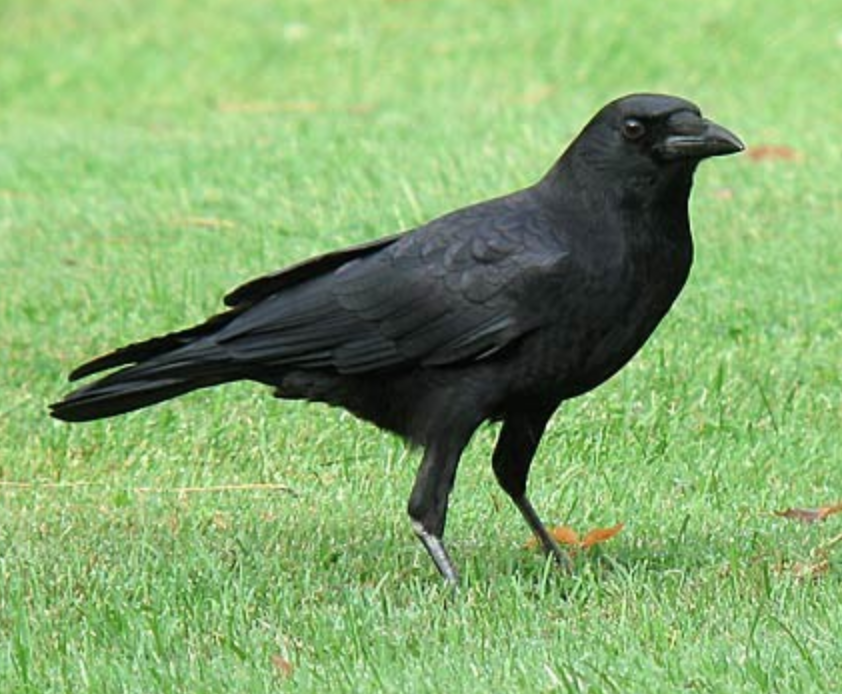Audubon Blog: The American Crow
Contributed by Bill Hamilton
The American Crow was featured on the cover of the March/April 2016 issue of Audubon magazine (the bird equivalent, I am sure, of a musician being on the cover of Rolling Stone!). The articles in this issue focused on scientific studies that evaluated the intelligence and individual and communal memories of crows.
Researchers at the University of Washington in Seattle, for example, went out in the 1990’s and caught and banded (and then released) a cohort of crows. The banding team wore “caveman” masks while they were netting and banding the crows. Subsequently, when the team returned to the crow banding area they were ignored unless they wore their caveman masks. Not only did the crows that had been directly captured and handled by the caveman scientists remember and react to the caveman masks, but also their fellow flock (or “murder” as a crow flock is called) members quickly learned the caveman face and joined in on the mobbing and commotion.
The team regularly returns to this crow territory and, although it has been almost twenty years since the initial trapping event and the originally trapped crows are now undoubtedly all dead and gone, the flock still responds in what the article labels a “crowpocalypse” whenever the caveman-masked researchers return.
These studies (along with some remarkable brain activity analyses using PET scanners and radioactive isotopes) not only show the individual crow to be extremely intelligent, but also highly connected within its flock to a communication and information system that has to be defined as a culture!
American Crows are seldom seen alone. In the non-breeding part of the year (fall through the winter) they form large, communal flocks of hundreds to thousands of individuals. Increasingly these large, winter flocks can be found in urban areas (much to the distress of the area’s human residents!). During the breeding season (spring to late summer) crows form smaller, more cohesive,familial flocks, that break up into even smaller foraging groups that daily travel out across the countryside looking for food.
Communication between individuals in the foraging groups and within the larger flocks is a very important aspect of crow biology. The remarkable and extensively documented abilities of crows to solve problems, to learn to mimic human vocalizations and to employ a variety of complex strategies to gather food is thought to be a direct extension of their evolutionary success as a social, highly efficiently communicating species.
American Crows, by the way, have longer rearing and nurturing periods than other bird species. These "learning periods" can last over a year and a half are even longer than those observed in many mammal species, and they enable the parental generation to communicate extensive amounts of very functional survival information to their offspring.
There are three crows that wait for me each morning to come out and dump a couple of handfuls of peanuts under my bird feeders. They watch me from surrounding tree tops and excitedly caw and fidget about when I carry out my bucket of birdseed, corn and peanuts to fill my feeders. They often swoop down to start picking up and swallowing as many peanuts as they can (as fast as they can) even before I get back to the front porch. This foraging group has me clearly identified and classified. I wonder what would happen if I wore a caveman mask one morning?
